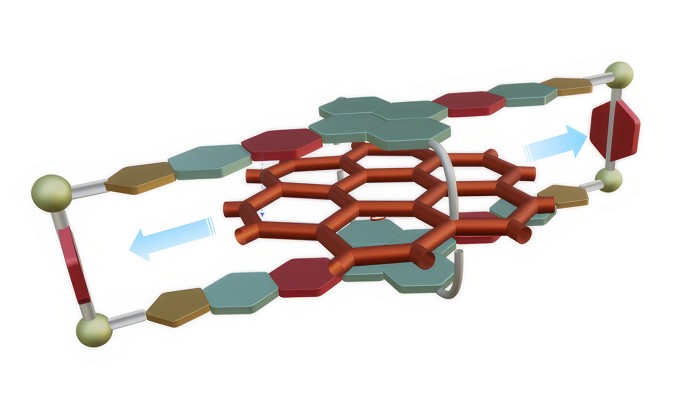Advertisement
Grab your lab coat. Let's get started
Welcome!
Welcome!
Create an account below to get 6 C&EN articles per month, receive newsletters and more - all free.
It seems this is your first time logging in online. Please enter the following information to continue.
As an ACS member you automatically get access to this site. All we need is few more details to create your reading experience.
Not you? Sign in with a different account.
Not you? Sign in with a different account.
ERROR 1
ERROR 1
ERROR 2
ERROR 2
ERROR 2
ERROR 2
ERROR 2
Password and Confirm password must match.
If you have an ACS member number, please enter it here so we can link this account to your membership. (optional)
ERROR 2
ACS values your privacy. By submitting your information, you are gaining access to C&EN and subscribing to our weekly newsletter. We use the information you provide to make your reading experience better, and we will never sell your data to third party members.
Molecular Machines
Video: Microfluidic method pumps out graphene micromotors
The simple fabrication technique yields helical, graphene-based motors, an attractive material for waste remediation and drug delivery
by Tien Nguyen, special to C&EN
January 7, 2021
| A version of this story appeared in
Volume 99, Issue 2
Micromotors could someday zip through wastewater picking up pollutants or race through the bloodstream delivering drugs. Researchers have developed a number of strategies, such as using chemical fuels and magnetic fields, to propel these tiny devices. Now, researchers have found a way to make helical magnetic-responsive micromotors out of graphene (ACS Nano 2020, DOI: 10.1021/acsnano.0c07067). The carbon material is attractive for micromotors because it’s easily functionalized and possesses a large surface area. Yet adapting current methods for making helical micromotors to graphene has been challenging. To that end, the team developed a cheap, simple method to pump out the coil-shaped motors. The team investigates the motors’ ability to navigate microchannels and also kill bacteria when armed with antibacterial silver. This work combines the advantages of graphene and magnetically-powered micromotors, which are more suitable for practical applications such as environmental remediation and biosensing than chemically-powered motors, says Wei Gao, a microrobotics expert at the California Institute of Technology who was not involved in the study.
Subscribe to our YouTube channel to catch all of our chemistry news videos.
The following is the script for the video.
Tien Nguyen (voice over): Watch as this assembly line pumps out tiny machines called micromotors. These micromotors are only a few hundred micrometers long and they can move when put in a magnetic field. Scientists propose that micromotors like these could one day deliver drugs inside the body or clean up wastewater by absorbing pollutants.
Micromotors propel themselves in a number of ways. A popular way to get around is to use a chemical fuel, such as hydrogen peroxide. Materials in the motors react with the fuel to produce jets of gas bubbles that push the tiny particles forward. But this approach can introduce unwanted toxic compounds into the motor’s surroundings. Ditching the fuel and just using an external magnetic field to move the motors avoids those toxicity issues. It’s a strategy that’s also well suited for biomedical applications because magnetic fields can penetrate the body.
Now, a team of researchers at the Chinese University of Hong Kong and Huazhong University of Science and Technology have developed novel magnetic-responsive micromotors made of graphene. Researchers can easily attach other molecules to graphene, and the material has a high surface area, which makes it attractive for picking up pollutants. The corkscrew shape helps micromotors move in a rotating magnetic field, but it’s been challenging to make helical micromotors from graphene until now.
To make the motors, the team developed a cheap microfluidic method. The team pumps oil through a solution of graphene oxide and magnetic iron oxide and a solution of sodium alginate.
What comes out are tiny corkscrews with an oil-droplet head attached to a graphene oxide–based tail all of which are sealed inside a sodium alginate fiber. The helical motors get their signature shape through the “liquid rope-coil effect.” This effect depends on precisely controlling the flow speed of each fluid. For instance, if the oil is injected slowly, the material comes out fairly straight. But as you increase the oil speed, you’ll see the material start to form coils.
The team takes the coils they made and reduces the graphene oxide to graphene, then washes away the oil and sodium alginate to isolate individual graphene micromotors. By applying a magnetic field, the researchers could navigate the micromotors through a microfluidic channel, and they found that motors that have smaller diameters and more space between their coils moved best. The team also attached silver to the micromotors to investigate their ability to kill bacteria. The silver micromotors could kill E. coli in a petri dish most effectively when they were moved around by a magnetic field.
While micromotors haven’t appeared in real-world applications yet, many devices, like this one, are moving forward.



Join the conversation
Contact the reporter
Submit a Letter to the Editor for publication
Engage with us on Twitter